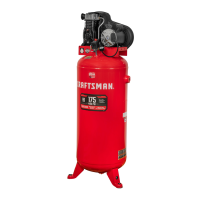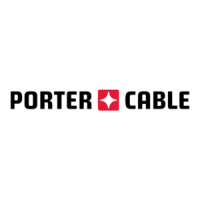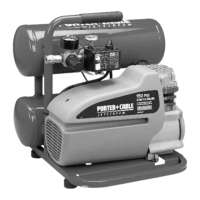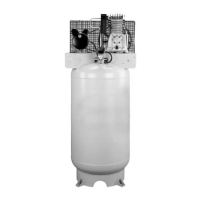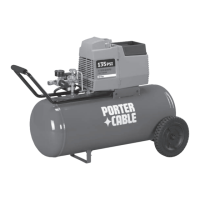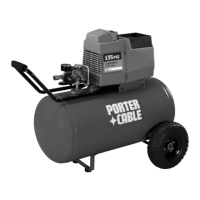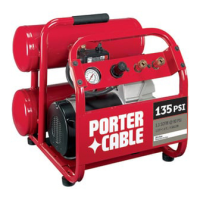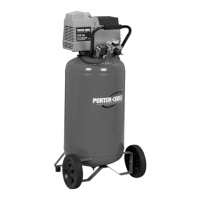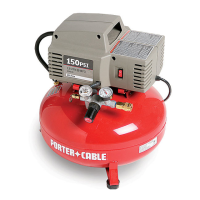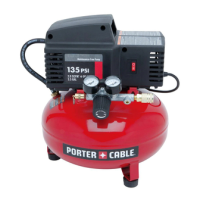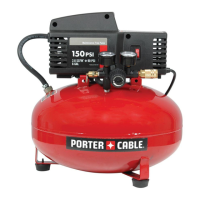Part No. D20324-011-2
Single-Stage Oillube
Compressor
Instruction
manual
To learn more about Porter-Cable
visit our website at:
http://www.porter-cable.com
The Model and Serial No. plate is located on the
frame. Record these numbers in the spaces below
and retain for future reference.
Model No.
Type
Serial No.
ESPAÑOL: PÁGINA 27
FRANÇAIS: PAGE 53
IMPORTANT
Please make certain that the person who is to use
this equipment carefully reads and understands
these instructions before starting operations.
PROFESSIONAL POWER TOOLS
Copyright © 2000 PORTER-CABLE Corporation
MODEL
CPLC7060V
